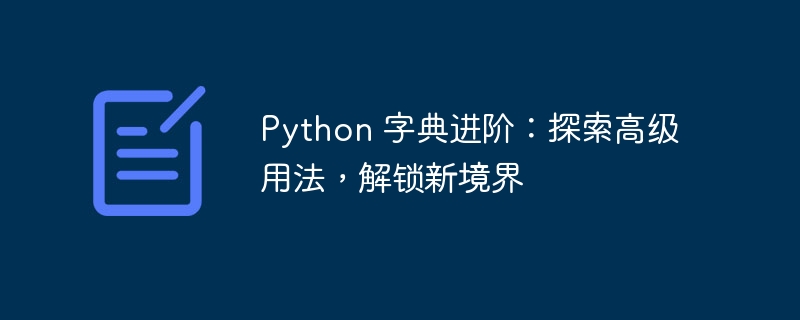

Nested dictionaries are data structures that use one dictionary as the value of another dictionary. This allows you to create complex data structures, organizing data into hierarchies. For example, you can create a dictionary to store student information, where each student's dictionary contains information such as name, student ID, and grades.
students = {
"Alice": {
"name": "Alice Smith",
"id": 12345,
"grades": [90, 85, 95]
},
"Bob": {
"name": "Bob Jones",
"id": 23456,
"grades": [80, 90, 85]
}
}To access values in a nested dictionary, you can use the dot operator (.). For example, to get Alice's name, you can use the following code:
name = students["Alice"]["name"]
python provides many built-in functions to operate on dictionaries. These functions allow you to add, delete, and update values in the dictionary, as well as find and sort keys and values in the dictionary.
Some commonly used dictionary operation functions include:
len(): Returns the number of key-value pairs in the dictionary. keys(): Returns a list of all keys in the dictionary. values(): Returns a list of all values in the dictionary. items(): Returns a list of all key-value pairs in the dictionary. get(): Get the value of the specified key in the dictionary. If the key does not exist, None is returned. setdefault(): If the specified key does not exist in the dictionary, the key is added to the dictionary and its value is set to the given value. If the key exists, the value of the key is returned. update(): Add key-value pairs from another dictionary to the current dictionary. Python provides a variety of methods to search for values in a dictionary. In addition to using the get() function, you can also use the in operator to check if a key exists in the dictionary, or use a for loop to iterate over the dictionary All key-value pairs in .
Additionally, you can use the sorted() function to sort keys or values in a dictionary. For example, to sort student names in the students dictionary in ascending order, you would use the following code:
sorted_students = sorted(students.items(), key=lambda x: x[1]["name"])
Dictionaries are powerful data structures in Python that help you store and retrieve data. Understanding advanced uses of dictionaries unlocks the full potential of dictionaries and helps you write more powerful and efficient Python programs.
The above is the detailed content of Advanced Python Dictionary: Explore advanced usage and unlock new realms. For more information, please follow other related articles on the PHP Chinese website!




